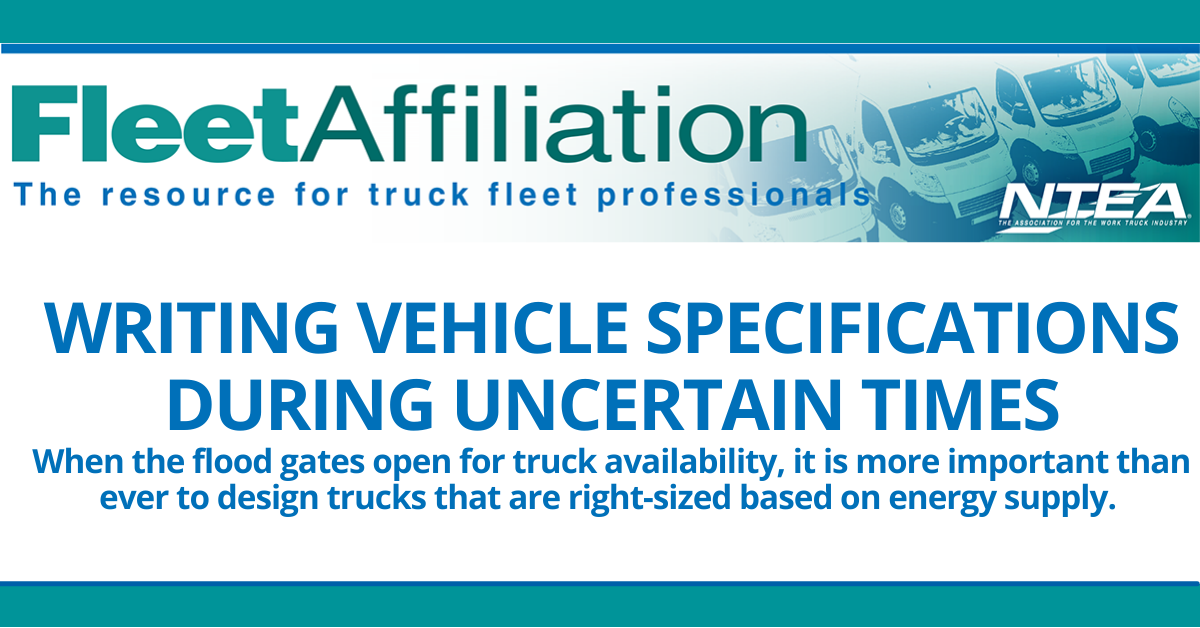
Published in June 2022 Fleet Affiliation.
It is vital to stay ahead of the curve when it comes to truck design and writing specifications. While it may seem like standard operating procedure to simply dust off the last design and update it with the latest manufacturer changes, the reality of today's supply chain challenges means that trucks aren't always available for delivery. And this is why it's necessary to take a different approach when writing specifications during times like this.
While there is some light at the end of the tunnel on supply chain challenges, many fleets have resorted to purchasing simply what is available. While it solves the immediate need for vehicle replacement, it may result in longer-term costs and consequences.
Where do we go?
It is important to play the long game, and yes, there will be short- and mid-term compromises along the way. However, staying true to the long-term plans and goals will likely bring continued stability to fleet operations. Currently, fuel is one of the most volatile costs in operating expenses right now. Beyond supply, demand, and political factors, energy costs are extremely unpredictable in the mid- to long-term.
Another push is the continued movement on electrification, and while we are waiting to see what the overall impact of pending regulations/technologies will be, life goes on and fleet managers are still typically being asked (or told) to do more with less. When the flood gates open for truck availability, it is more important than ever to design trucks that are right-sized based on energy supply.
Measuring productive energy
Our industry is familiar with horsepower as the basic unit of work. One unit of horsepower is defined as 33,000 pound-feet per minute. 33,000 pounds moved one foot in one minute, or 33 pounds in 1,000 feet in one minute has the equivalency of one horsepower of work being accomplished.
The critical factors regarding how much horsepower or horsepower equivalents here are weight, speed, and distance. This fuel-based or energy right sized design plays a critical role.
While electrification is in the headlines and at the forefront of proposed regulation, it is important to take a look at the big picture and define the most productive energy to use. This is where several factors come to play: Drive and Duty Cycle, energy availability, and infrastructure requirements.
Circling back, it should be noted that many fleets have shifted operations out of necessity based on several factors, whether that is chassis and material availability or even operational functions. This can be an opportunity to review and modify if needed. While there is the value of standardization and regularity, there are also opportunities to consider for the future.
It is important to take a look at the future of operations and design appropriately. The same fundamentals should still be implemented, and this is continued two-way communication with all stakeholders. Be prepared to offer solutions and alternatives with thoughtful short-, mid-, and long-term plans and goals.
